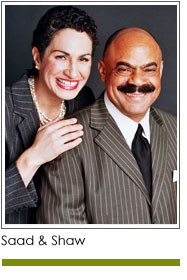 What does an artist look like? What about a businessperson? Do they look the same? Different? What are they doing? How do they dress? Where do they live? Here are two more questions to consider. Which is the introvert? Which can assess the environment and create impactful solutions?
What does an artist look like? What about a businessperson? Do they look the same? Different? What are they doing? How do they dress? Where do they live? Here are two more questions to consider. Which is the introvert? Which can assess the environment and create impactful solutions?
We pose these questions as opposites, building on the assumption that artists and business people are of two different minds. That is the dominant message in our culture. It is “luck” that makes an artist successful in his or her lifetime, and “smarts” that lead to business success. What we are learning is that these assumptions are not necessarily true and can keep us – as a community and a country – from finding solutions to our challenges and building economic prosperity.
Over the past few years we have been exposed to new thoughts about economic development, community development and the role that artists play in both of these fields. Importantly, we have seen how a focus on equity and the work of African American artists has the potential to inspire and support businesses that are by, for and from the black community. Yes, we said businesses. Revenue and job producing ideas which – with investment – can improve neighborhoods, encourage community, introduce young people to working with a therapist, reduce blight, remove trash, encourage the culinary arts of immigrants, and introduce herbal arts to the next generation.
We learned this from the 2017 ArtUP fellows of Memphis, Tennessee. These are women and men with visions for transforming their communities through the arts. They received six months of training, investment and travel to other cities as they grew and refined their ideas, and began creating a business plan and a “pitch.”
These are neighbors solving neighborhood problems with primarily low-cost, art-focused solutions. The fellows use their creativity as a catalyst for growing community, creating jobs, retaining culture, and bringing the generations together. Many of the businesses are rooted in black history and culture. They focus on music, painting, upholstery and furniture refinishing, culinary arts, quilting, and herbs. They are about sharing history, and keeping history alive.
Each is an example of micro-enterprise with the potential for economic development and social impact that extends beyond the entrepreneur. Investing in this work is one example of equity in philanthropy and economic development.
Learn more at weArtUp.org.
Copyright 2017 – Mel and Pearl Shaw
Mel and Pearl Shaw are authors of four books on fundraising available on Amazon.com. For help growing your fundraising visit www.saadandshaw.com or call (901) 522-8727.











